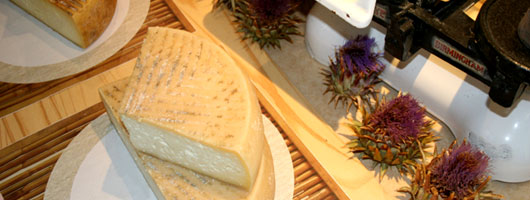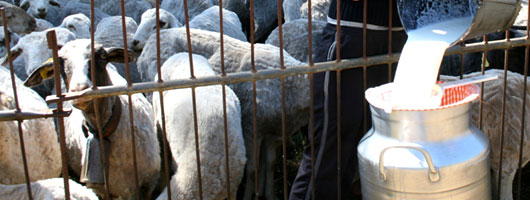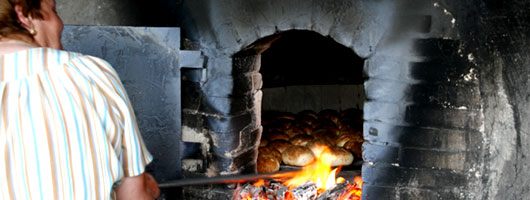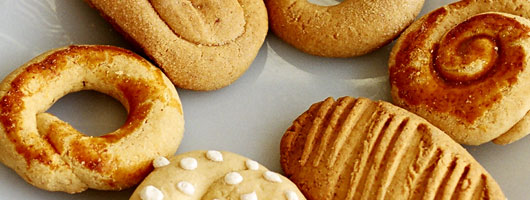Santa María de Guía, known by the islanders simply as “Guía” or, as it used to be called, “Guía de Gran Canaria”, is the municipality of the Canary Islands where the most unique type of cheese is made. This is because it carries its name and has the special qualification of Protected Denomination of Origin: Guía Flower Cheese and Guía Cheese. The product is actually also made by the families of migratory shepherds from neighbouring municipalities, while its main point of sale has been the Sunday Market in Guía since the 19th century.

For most of last century this market, which sets up in front of the church in Guía, was the main site of the trading of agricultural, cattle and fish products for the whole of the north of the island. “Farmers would come with their mules to sell firewood, as back then there was no gas, especially for the bakers’ ovens. And many other people would also come along, selling potatoes and fruit…” recalls Lalo Candelaria, one of the oldest residents in the town.
This Sunday Market is actually on for two days a week, in the Plaza Grande: the Sunday one of course, and another on Tuesdays. They are held in the morning, although they don’t attract the hordes from yesteryear due to competition from modern shopping centres. But residents and visitors alike can still find some of the stalls whose owners produce and bring their own potatoes, fruits, and of course, the Guía cheeses! (And for the benefit of anyone who doesn’t know, “flower” cheese means the milk has been curdled with vegetable rennet, in other words, by firstly mashing up the cardo flower in a little water, then adding it to it. The milk has been freshly drawn from the migratory sheep and filtered in a strainer, and in most cases, mixed with goats’ and/or cows’ milk.

What is a lump of cheese without its bread? A number of fine bakeries are still making different types of breads, including traditional wood fire oven-baked round loaves, although in Guía we can also find bread made to a typical old age country recipe, that some women still make today by following completely traditional methods, such as kneading the dough by hand, and baking it in a firewood oven. This speciality bread is called potato bread.
“This has been in our household for all time”, explains Anselma Pérez, who is over 80 years old but still has a very sharp memory. It was devised “to use up all the leftovers in the kitchen”, as its ingredients are boiled potatoes, known here as “sancochadas”, to make up a dough of flour, yeast, sugar, lemon, cinnamon, oil and the afore-mentioned mashed potatoes. Luckily for consumers, this bread can be found nowadays all around the shops and supermarkets in the municipality.

It is a sweeter bread than normal, and its dough is tightly packed. Although for sweets themselves the city has its own ancient confectioners, at “dulces de Guía”, an assortment of polvorones or shortbreads, and buscuits baked in the wood-heated oven, made from a butter and flower dough, with a stand out “bollo con pintitas” bun, plus also aniseed, raisins, almonds and cinnamon. Their origins, like in so many other villages around Gran Canaria, started off years previously in the houses of some ladies who baked them for their customers, usually just neighbours, as long as they could provide their own eggs to make them.

“Rosita and Chonita were the old ladies who made the buns to order”, recalls one of the present-day confectioners who still makes them on the premises, and who still has people that come to have them made asking if they need to bring the eggs! This question would raise eyebrows today, but was quite normal for generations growing up the middle of last century, when eggs were quite a rarity. In those days, families would have to collect eggs laid by the resident hen over several days, before taking them around to the bakers and ordering their assortment of sweets for celebrations such as christenings or family visits.
Would you like to find out more about how Flower Cheese is made?
Then make sure you visit the Casa del Queso in Montaña Alta, the epicentre for cheese production. (Guided tours available for groups with prior appointment)